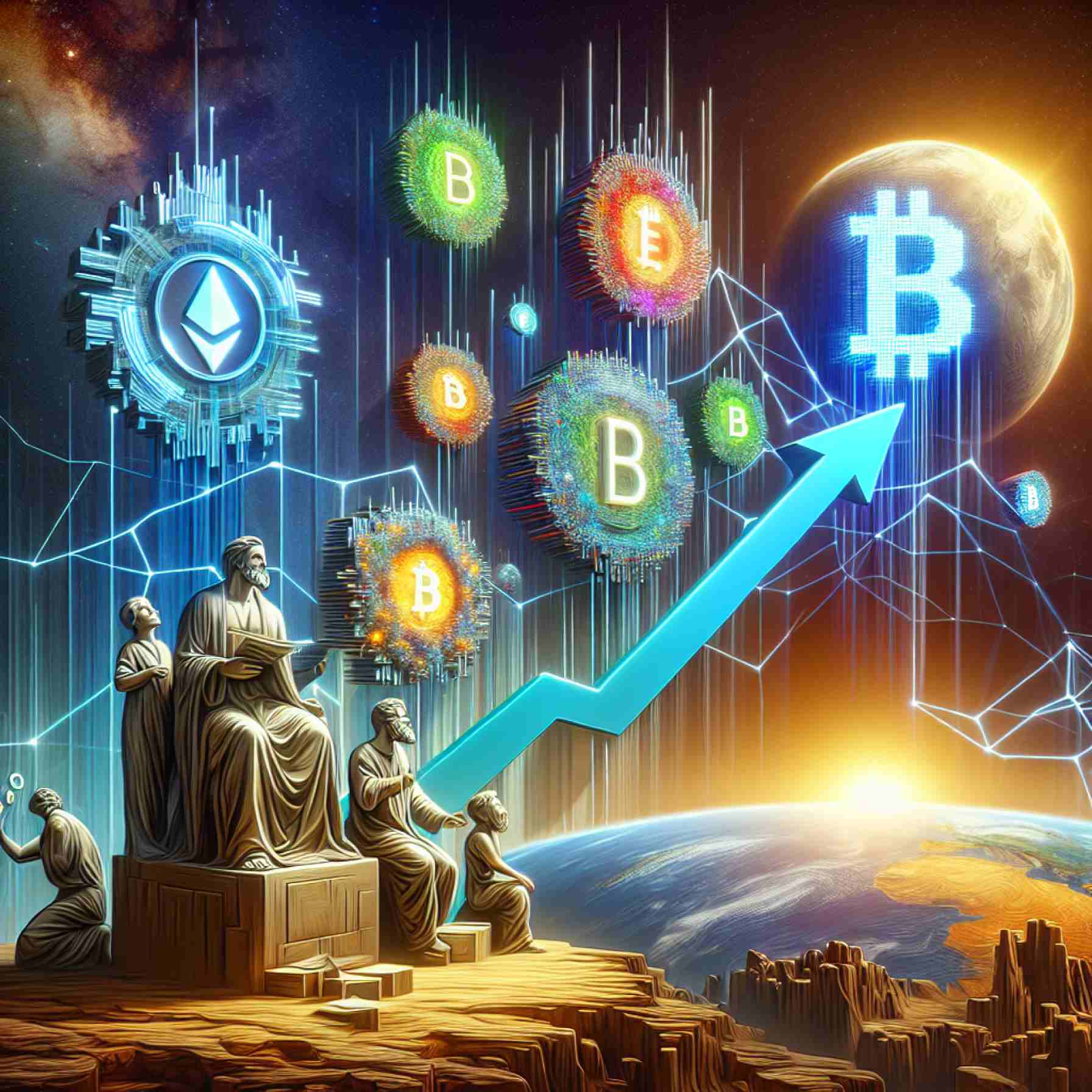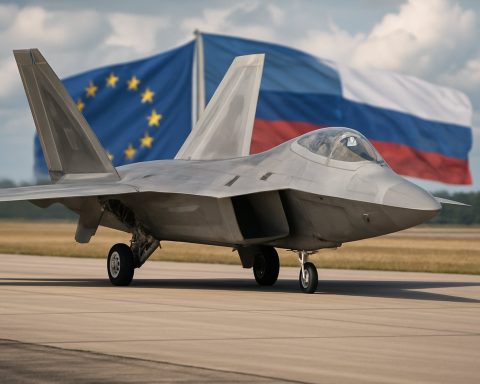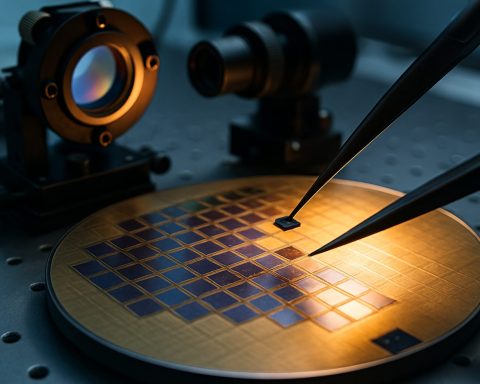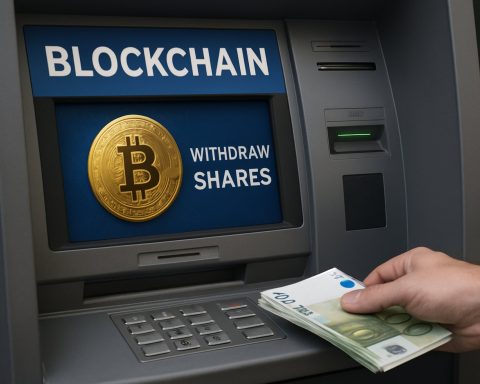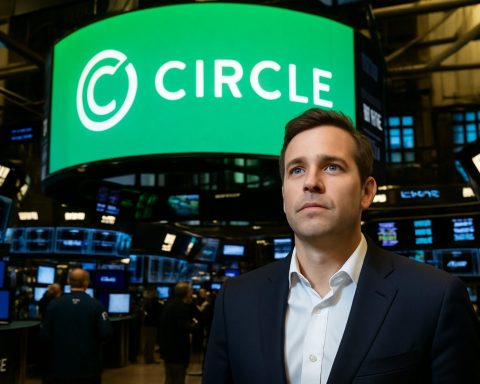- Crypto art, driven by technological advancements, is revolutionizing art creation and consumption globally.
- Non-fungible tokens (NFTs) ensure digital art’s authenticity and ownership via blockchain, enabling direct sales from artists to collectors.
- Celebrity and major investor endorsements have legitimized the crypto art market, attracting global interest.
- Innovations in virtual and augmented reality are expanding possibilities for immersive digital art experiences.
- Challenges include high technological costs, but potential rewards are significant, especially in emerging regions.
- Sustainability is crucial, with platforms adopting eco-friendly practices to address blockchain’s environmental impact.
- Crypto art exemplifies the digital transformation across industries, with markets in North America and Asia-Pacific leading the evolution.
- This movement redefines art ownership and democratizes creativity in an era of rapid technological growth.
A revolution is quietly underway in the world of art, driven by the relentless march of technology and the digital age’s ever-expanding canvas. At the forefront of this change is the burgeoning sector of crypto art, a phenomenon reshaping both the creation and the consumption of art on a global scale.
Imagine a digital painting that you not only view on your computer but also own as a unique asset, guaranteed by blockchain technology. This is the promise of crypto art, a marketplace that integrates cutting-edge technology with traditional artistic expression.
At the heart of this movement are non-fungible tokens, or NFTs, digital certificates embedded in blockchain that verify the authenticity and ownership of digital creations. Artists can now sell their works directly to collectors with unprecedented security. Gone are the days of relying solely on galleries and dealers; NFTs empower artists to exhibit their work to a global audience and monetize it accordingly.
The allure of crypto art extends beyond the technicalities of blockchain. The involvement of celebrities and major investors has lent this market a sheen of legitimacy and allure. Big names across various industries have embraced NFTs, from musicians selling exclusive album art to sports stars minting digital trading cards. This endorsements have sparked widespread interest, drawing enthusiasts and investors from all corners of the globe.
Moreover, as the demand for immersive experiences grows, the line between reality and virtual experiences continues to blur. In this new frontier, virtual and augmented reality technologies are intertwined with digital artworks, creating an avenue for both artists and collectors to explore uncharted territories.
Yet, this market is not without its challenges. While the technological investment is steep, with costs associated with maintaining a blockchain presence, the potential rewards are equally significant. Developing regions, with budding technological infrastructures, stand on the edge of transformation, awaiting this digital wave that promises to democratize access and innovation in the art arena. Here, crypto art is poised to find fertile ground, where digital infrastructure can foster creative expression unshackled by borders.
Importantly, sustainability and environmental responsibility are critical factors in the ongoing evolution of crypto art. As sectors increasingly align with eco-friendly practices, platforms are adopting greener technologies to mitigate the carbon footprint traditionally associated with blockchain operations.
The crypto art movement speaks to the broader digital transformation reshaping industries worldwide. With markets like North America leading the charge through robust investments and cutting-edge innovations, and regions in Asia-Pacific rapidly catching up, the future is ripe with promise.
In sum, crypto art represents not just a new mechanism for art distribution but an entirely new paradigm of art ownership and experience. It challenges preconceptions, blurs the lines between creators and audiences, and democratizes creativity in an era of unparalleled technological advancement. Whether you’re an artist seeking new avenues for expression, a collector looking for novel investments, or simply an enthusiast of modern phenomena, the world of crypto art beckons with endless possibilities.
Unveiling the Future of Art: How Crypto Art Is Transforming the Digital Landscape
Understanding Crypto Art
The rise of crypto art is a direct result of the convergence between traditional artistic expression and modern technology. At its core lies the concept of non-fungible tokens (NFTs), which are unique digital certificates that leverage blockchain technology to establish ownership and authenticity of digital artwork. Here are additional insights and trends in the emerging crypto art market:
Key Features and Benefits
1. Direct Artist-Collector Interaction: By eliminating intermediaries like galleries, artists can now sell their work directly to collectors. This empowerment ensures fairer compensation for artists and promotes a diverse art culture.
2. Global Accessibility: Artists and collectors from anywhere in the world can participate in the crypto art market. This inclusivity breaks down geographic barriers and democratizes access to art in unprecedented ways.
3. Celebrity Endorsements Driving Growth: High-profile endorsements from celebrities in music, sports, and entertainment have spurred public interest, positioning crypto art as a legitimate investment vehicle.
How to Get Started with Crypto Art
1. Choose a Platform: Select a marketplace that supports NFTs, such as OpenSea, Rarible, or Nifty Gateway. These platforms allow you to buy, sell, and mint NFTs.
2. Create a Digital Wallet: To trade or create NFTs, you’ll need a digital wallet that supports cryptocurrency transactions, such as MetaMask.
3. Mint Your Artwork: Convert your digital artwork into an NFT by minting it on your chosen platform. This involves uploading the artwork, defining its properties, and paying a transaction fee.
4. List and Market Your NFT: Once minted, list your NFT for auction or sale. Use social media and online communities to market your work and attract potential buyers.
Market Forecasts & Industry Trends
– Expanding Market: The global NFT market is booming, with projections suggesting a compound annual growth (CAGR) of over 30% in the coming years, driven by increasing adoption and innovation in the space.
– Integration with Virtual and Augmented Reality: As VR and AR technologies advance, expect more immersive art experiences that further blur the lines between digital and physical realms.
– Sustainability Initiatives: Platforms are increasingly conscious of environmental impacts, adopting eco-friendly practices to reduce the carbon footprint of blockchains through innovations like proof-of-stake mechanisms.
Reviews & Comparisons
– OpenSea vs. Rarible: OpenSea is lauded for its vast marketplace and user-friendly interface, while Rarible stands out with its community-driven approach and customizable marketplace.
– Ethereum vs. Solana Blockchains: Ethereum, the pioneer blockchain for NFTs, is favored for its widespread acceptance, whereas Solana offers faster transactions and lower fees, attracting cost-conscious creators.
Pros & Cons Overview
Pros:
– Increases artist revenue and autonomy
– Expands global reach and market
– Leverages secure ownership through blockchain
Cons:
– High energy consumption and environmental concerns
– Potential market volatility and speculation
Actionable Recommendations
– For Artists: Explore platforms that align with your values in terms of fees, community, and environmental impact.
– For Collectors: Prioritize due diligence when investing in NFTs, focusing on artists’ credibility, artwork uniqueness, and market trends.
– For Enthusiasts: Stay informed on emerging technologies and platforms shaping the future of art and consider participating in community discussions.
Conclusion
Crypto art, through its integration of technology and creativity, ushers in a new era of innovation in the art world. It challenges traditional norms, promotes inclusivity, and presents new paradigms of ownership and experience. Whether an artist, collector, or curious observer, engaging with this digital art revolution offers untapped possibilities.
For more about the digital transformation of industries, visit Forbes.
